Computex 2014: The ASUS Booth Tour
by Ian Cutress on June 11, 2014 11:45 AM ESTZenbook NX500
Another highlight of that initial ASUS press conference was the launch of the next Zenbook. The NX500 is a 15.6-inch 4K design using Haswell mobile CPUs and a GTX 850M, presumably with Optimus as well. At a quick glance it almost looks like a MacBook Pro, although looking more at the keyboard (as well as the ASUS logo) might make the user stand out more in their local workspace.
Due to the 15-inch size, the NX500 is not necessarily an upgrade to the UX301, the 13-inch 2560x1440 Zenbook announced at last year’s Computex. I have since invested in a UX301 for work use, and the size and weight difference is particularly noticeable. The NX500 has a more regular z-height throughout the chassis rather than tapering to an edge, again mirroring the difference between the MBP and the MBA. It would seem that ASUS might pursue two different lines of Zenbook to act as counterpoints to the Apple hardware offerings.
The NX500 models on display were using an i7-4712HQ processor – a 37W quad core Haswell Refresh CPU with HyperThreading, listed at 2.3 GHz with a 3.3 GHz Turbo mode. A quick look in the system also showed the 512GB Samsung XP941 M.2 x4 SSD, rather than the dual PCIe SSDs in the UX301.
I did not notice the 4K/UHD display at first compared to the 1440p display on my UX301, but I would assume that actually using the device for a measured amount of time might make it more apparent. The main problem with the NX500 will be Windows 8.1 scaling issues more than anything else, something which I advise users looking at high DPI Windows machines. ASUS had two NX500s on show, one with a 72% NTSC display and another with 100%:
The aim here is that a high-end notebook must also come with high-end features for professional use.
I personally could not tell the difference between the two at quick glance, but my small amount of colorblindness might be the reason.
In terms of side ports, the right hand side has two USB ports, an SD card reader and headphones:
The left has the power socket, mini-DisplayPort, HDMI and a third USB port. No Thunderbolt 2 here.
The 2.2 kg weight was noticeable, even when I used to use a 4 kg 15-inch notebook until recently. Using the 40-45W Maxwell GPU alongside a 37W CPU suggests that all in the ASUS laptop is pushing 100W when you factor in the display, DRAM and storage. The chassis size should be sufficient for cooling this amount of power, and it will be interesting to see how long the 96 Wh battery lasts in regular use.


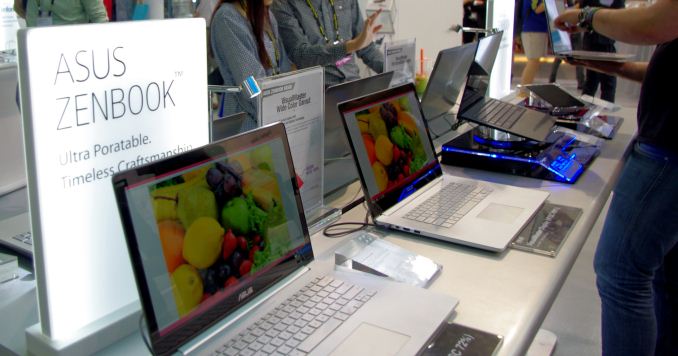
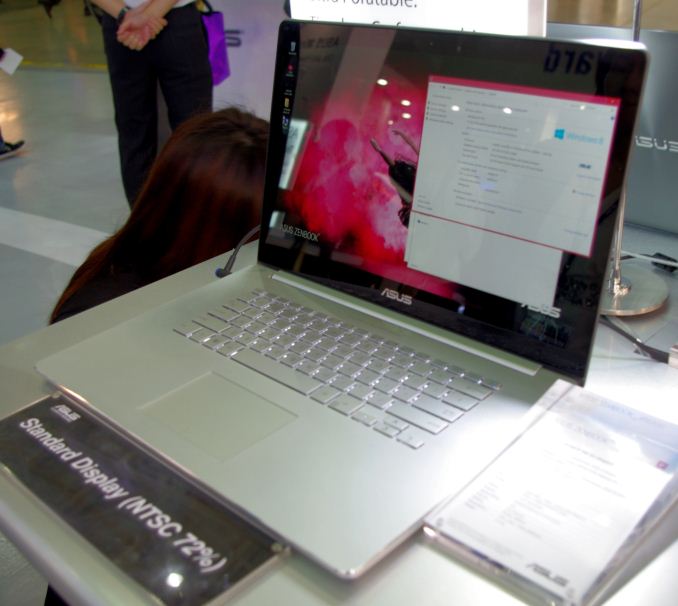
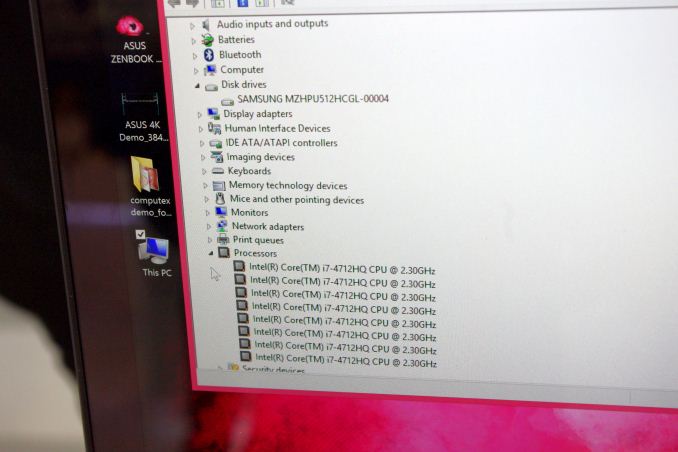
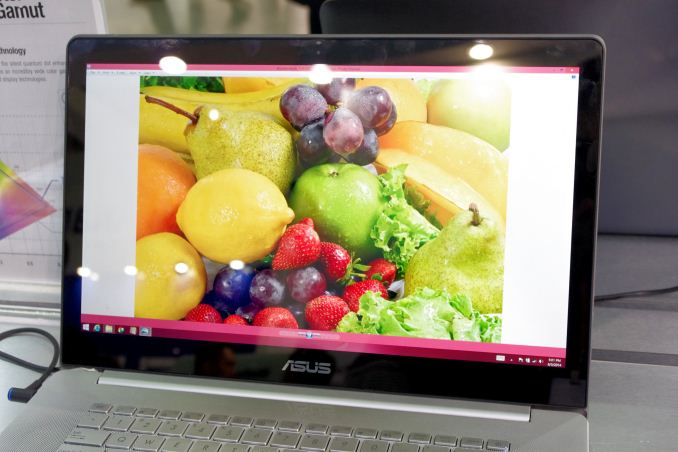
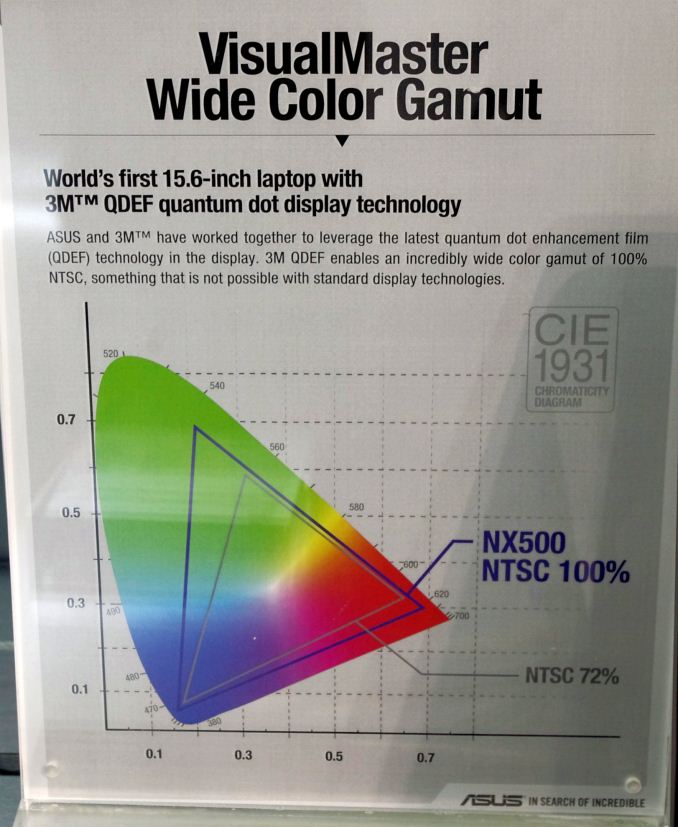
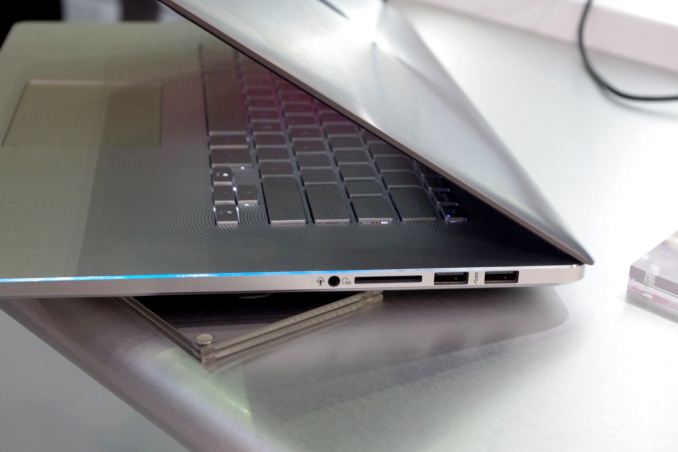
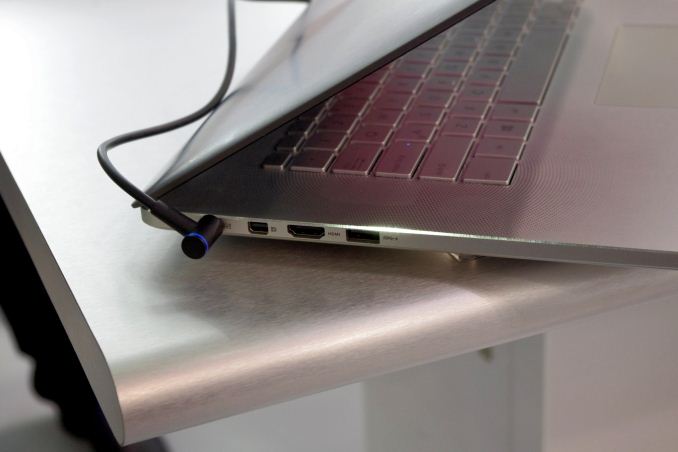








23 Comments
View All Comments
CknSalad - Thursday, June 12, 2014 - link
Hopefully the GR8 has a desktop cpu. If they are using desktop cpu parts, it would be nice if they have i5 and i7 T-Models as the cpu options (lowest is 35W TDP).I just hope that the custom cooling for the cpu isn't that of a notebook cpu cooler as they did market this as being able to run quietly (small size and low noise are the high points for me). Overall, this custom-built PC has a lot of good potential as a good lan, media, and streaming pc.
jimhsu - Saturday, June 14, 2014 - link
Any news on the UX303 (ultrabook form factor + discrete 840M)? That'll me my next notebook, if nothing better comes out in the interim.Matthew Wills - Thursday, May 16, 2019 - link
It's great that companies like Asus think about education and other social areas. Technologies will now be introduced into the educational system at an incredible speed. Already there are a huge variety of educational websites. Wikipedia is one of the most visited sites in the world. https://edusson.com/ an online writing service, is one of the largest websites that is designed to help students learn. Every day, thousands of students search the Internet for educational materials, but this is scattered throughout the network. The state needs to create its own educational web resource where all necessary information will be collected and systematized.